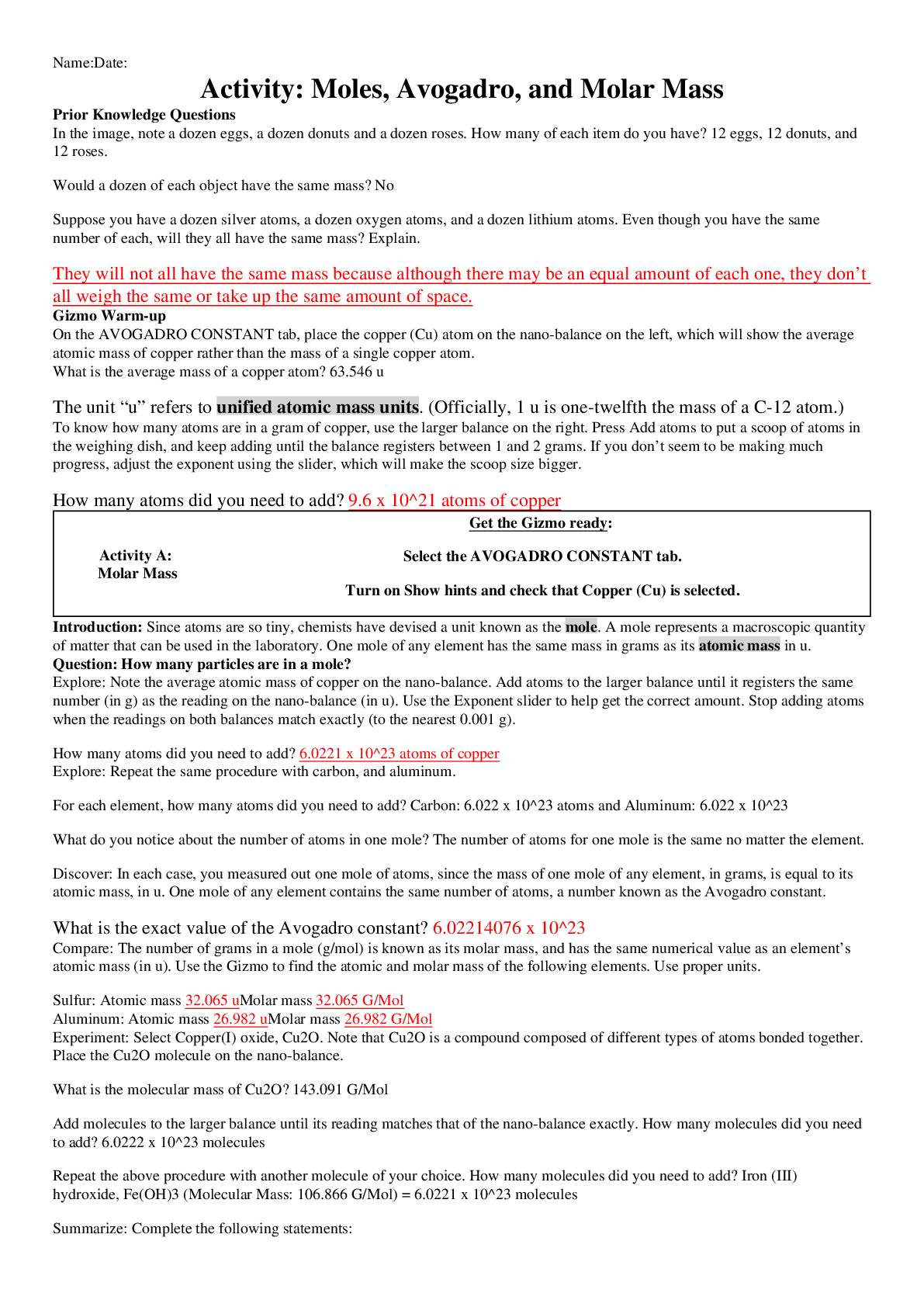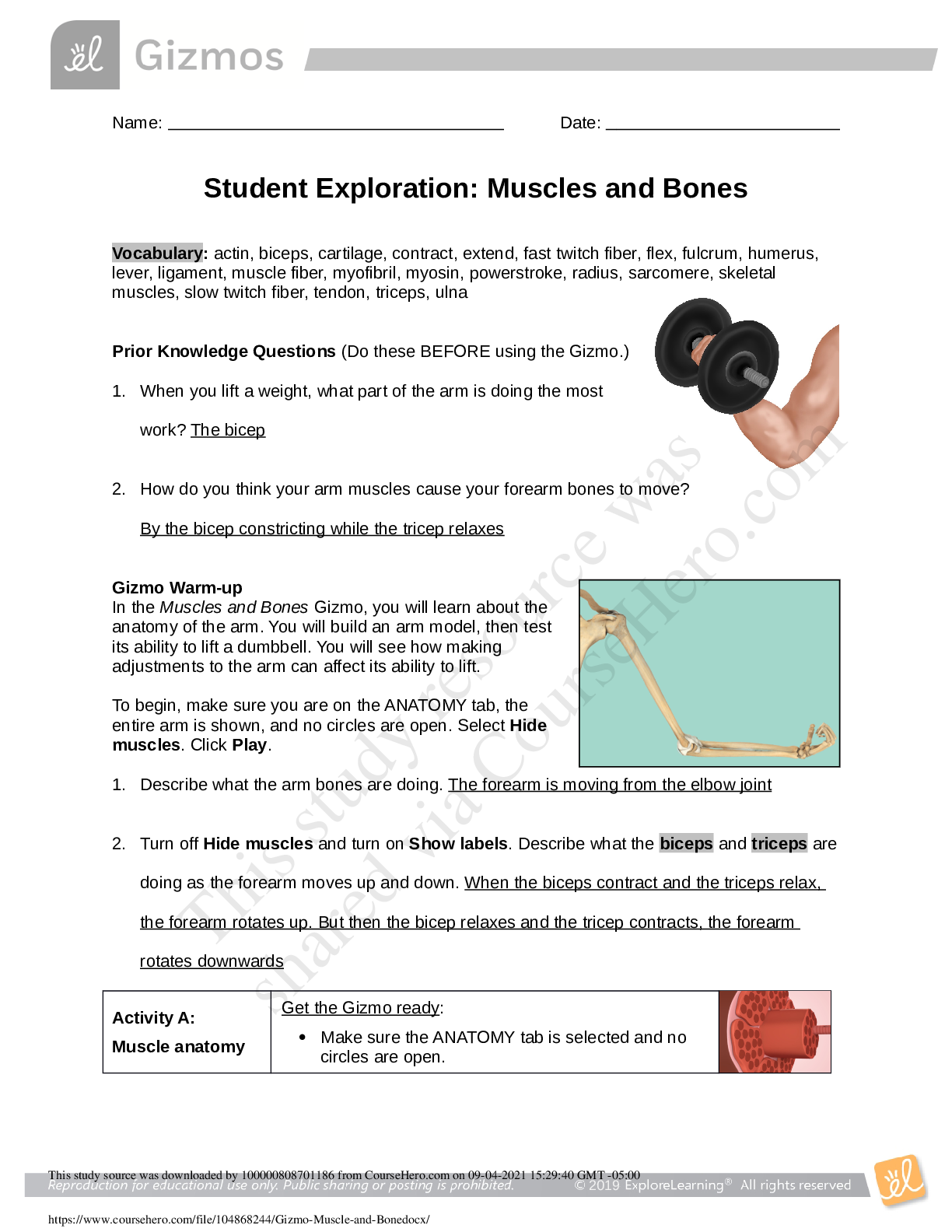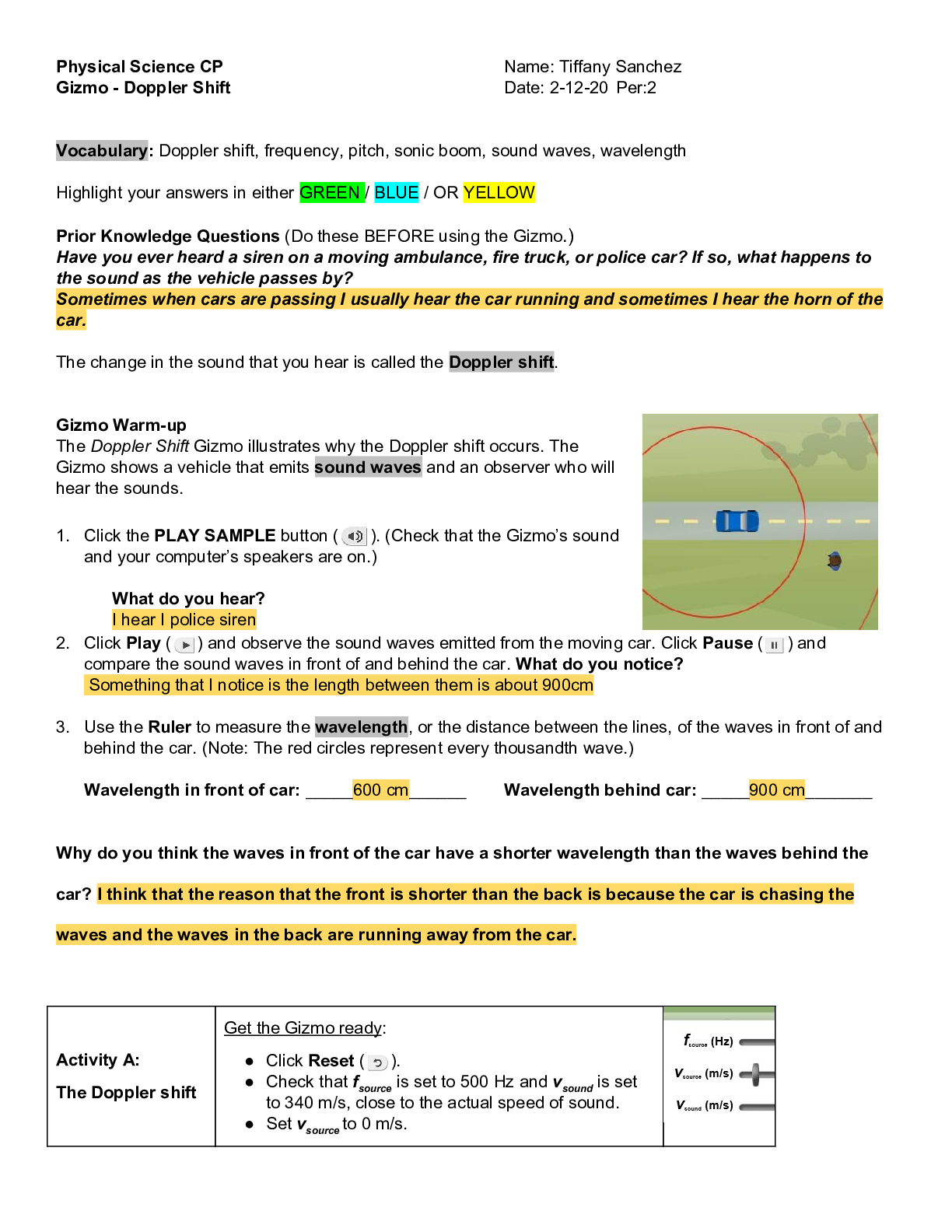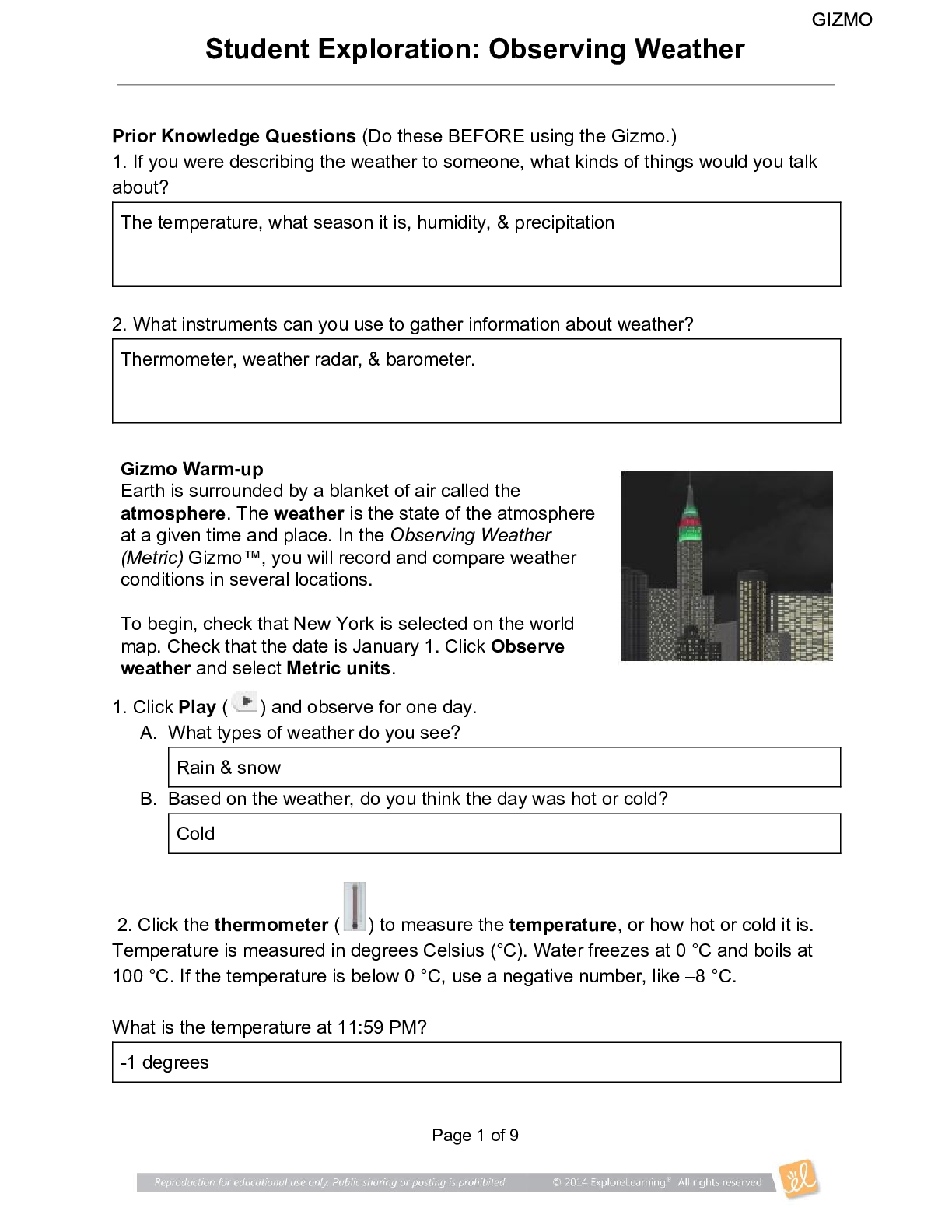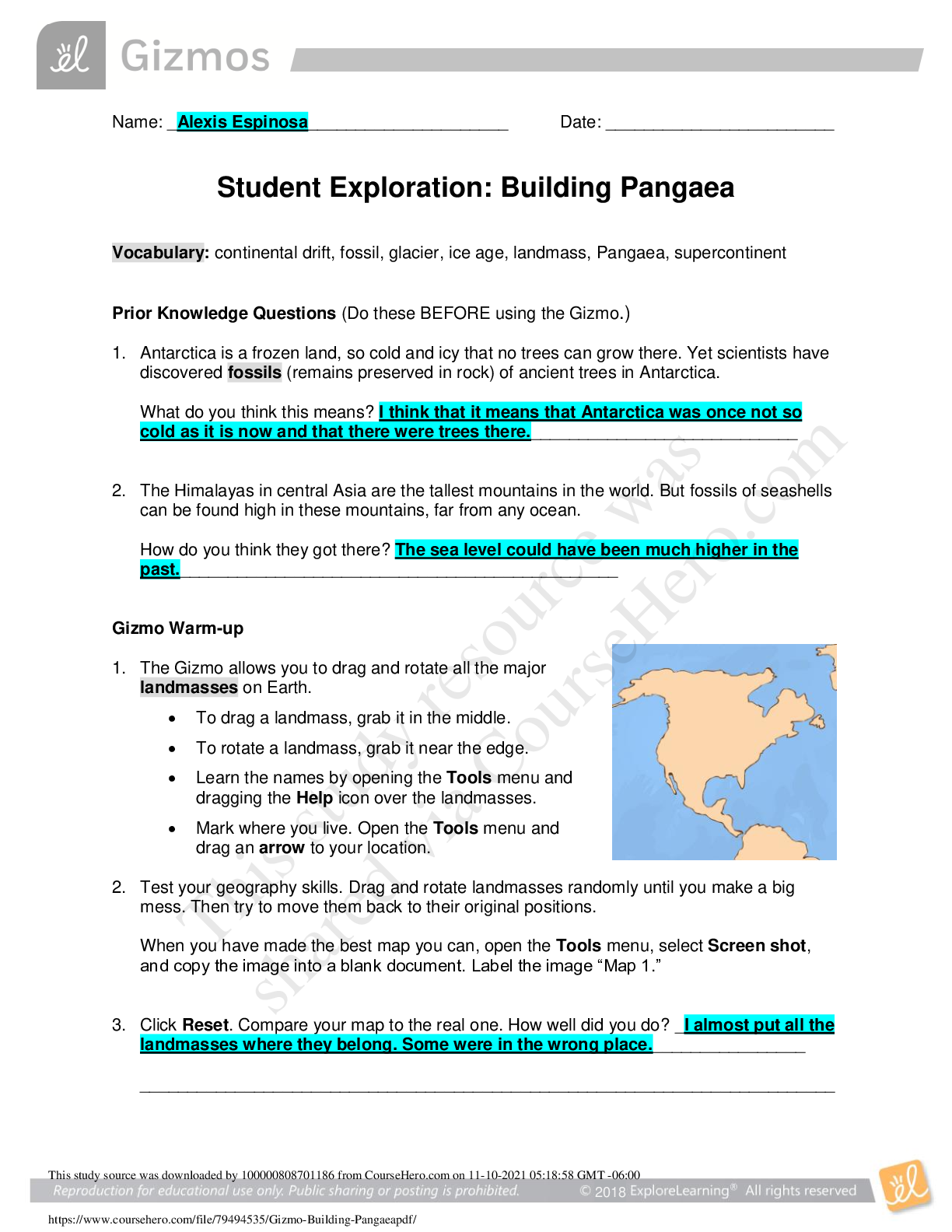Physics > GIZMOS > Summary SPH3UI Gizmos Student Exploration: Feed the Monkey (Projectile Motion)_2022 | SPH3UI Gizmos_ (All)
Summary SPH3UI Gizmos Student Exploration: Feed the Monkey (Projectile Motion)_2022 | SPH3UI Gizmos_FeedMonkeySE
Document Content and Description Below
Student Exploration: Shoot the Monkey Vocabulary: acceleration, free fall, trajectory, vector, velocity Prior Knowledge Questions (Do these BEFORE using the Gizmo.) Eccentric billionaire Veda Husse ... rt has invented a “banana cannon” to help feed the monkeys on her personal wildlife preserve. To feed a monkey high in the trees, simply aim the cannon at the monkey and fire a banana! Unfortunately, the noise of the cannon frightens the monkeys, and they drop out of the tree when they hear the sound. 1. To hit a falling monkey with a banana, where should Veda aim? (Circle your choice.) A. Above the monkey B. Below the monkey C. Directly at the monkey 2. Explain your choice: Both the banana and the monkey experience the same acceleration due to gravity in vertical direction and hence the trajectory of the two crosses. Gizmo Warm-up The Shoot the Monkey Gizmo™ shows a banana cannon and a monkey. When the cannon fires, the startled monkey drops from the branch. 1. Click Play ( ) to fire the cannon. What happens? The trajectory of the banana and monkey crosses. If the banana is close to monkey it grabs the banana. 2. You can use the sliders to change the banana velocity (vInitial) and cannon angle (θ). (You can also drag the cannon barrel.) Make adjustments until the monkey catches the banana. What were the velocity and angle that you used? Velocity = 20 m/s & Angle = 32°. 3. Now try increasing and decreasing the velocity. Assuming the banana is moving fast enough to reach the tree, does the monkey still catch the banana? Describe your findings. Yes, the monkey still catches the banana. With high velocity, the monkey catches the banana at higher point & at lower velocity, the monkey catches it closer to ground. _________________________________________________________________________ This study source was downloaded by 100000831988016 from CourseHero.com on 04-15-2022 00:06:10 GMT -05:00 https://www.coursehero.com/file/43760863/ShootMonkeySEpdf/ Activity A: Banana catchers Get the Gizmo ready: Click Reset ( ). Set the initial velocity (vInitial) to 26.0 m/s. Question: Where should you aim to hit the monkey with a banana? 1. Experiment: Turn on Show target line. Experiment with the Gizmo, trying several different cannon locations and launch angles. Try aiming above, below, and directly at the monkey. A. What always happens when you aim above the monkey’s head? Banana is above the monkey when their trajectories cross. B. What always happens when you aim below the monkey’s feet? Banana is below the monkey when their trajectories cross. C. What always happens when you aim at the monkey’s body? Monkey catches the banana. 2. Predict: How do you think changing the banana velocity will affect your results? Changing banana velocity will determine where the banana will be caught when fired directly at the monkey. At higher speed the banana will be caught at higher height and it will be caught closer to the ground if the velocity is lower. 3. Test: Click Reset. Turn on Show grid, and drag the cannon to the point (25, 0.0) on the grid. Aim the cannon at the monkey, and try vInitial values of 15.0, 20.0, 25.0, and 30.0 m/s. How did the banana velocity affect the results of the experiment? The banana went past the tree before the monkey could catch it in all the cases 4. Observe: Click Reset, and turn on Show path. Drag the cannon to (0.0, 16.0) so that it is at the same level as the monkey. Set vInitial to 25.0 m/s, and θ to 0.0 degrees. Click Play. The lines represent the trajectories, or paths, of the banana and monkey. The dots on the lines show positions every 0.15 seconds. Compare the dots for the banana and monkey. A. What do you notice about the height of the dots on each trajectory? The height of the dots for the same time is equal. This means they travel same vertical distance in given time. B. At any given time, what can you say about the heights of the banana and monkey? The height if banana and the monkey is same all the times. This study source was downloaded by 100000831988016 from CourseHero.com on 04-15-2022 00:06:10 GMT -05:00 https://www.coursehero.com/file/43760863/ShootMonkeySEpdf/ Activity B: Velocity vectors Get the Gizmo ready: Click Reset, and drag the cannon to the ground. Turn off Show grid and Show path. You will need a scientific calculator for this activity. Introduction: Velocity is an example of a vector quantity because it describes the speed and direction of an object. The velocity of an object through space can be shown by two components: a horizontal component (vx) and a vertical component (vy). Question: How does the velocity of an object change as it flies through space? 1. Observe: Turn on Show velocity vectors, and set θ to 45.0 degrees. Click Play, and focus on the blue and red arrows that represent the vertical and horizontal components of the banana’s velocity. A. As the banana flies through space, what do you notice about the blue (vertical) arrow? The blue arrow initially decreases in length in upward direction and later starts increasing in length in downward direction B. As the banana flies through space, what do you notice about the red (horizontal) arrow? The red does not change in magnitude and direction. C. Try other velocities and launch angles. Do these results hold up? Yes 2. Calculate: You can use trigonometry to find the initial horizontal and vertical components of the banana’s velocity. Take out your calculator now. Click Reset, and turn off Show velocity vectors. Set vInitial to 20.0 m/s and θ to 60.0 degrees. A. To calculate vx, multiply vInitial by the cosine of the angle: vx = vInitial • cos(θ): 10.0 m/s B. To calculate vy, multiply vInitial by the sine of the angle: vy = vInitial • sin(θ): 17.32 m/s C. Turn on Show velocity vectors to check. Were you correct? Yes 3. Analyze: An object flying through the air is said to be in free fall. As you observed, the horizontal component of velocity (vx) does not [Show More]
Last updated: 3 years ago
Preview 1 out of 4 pages
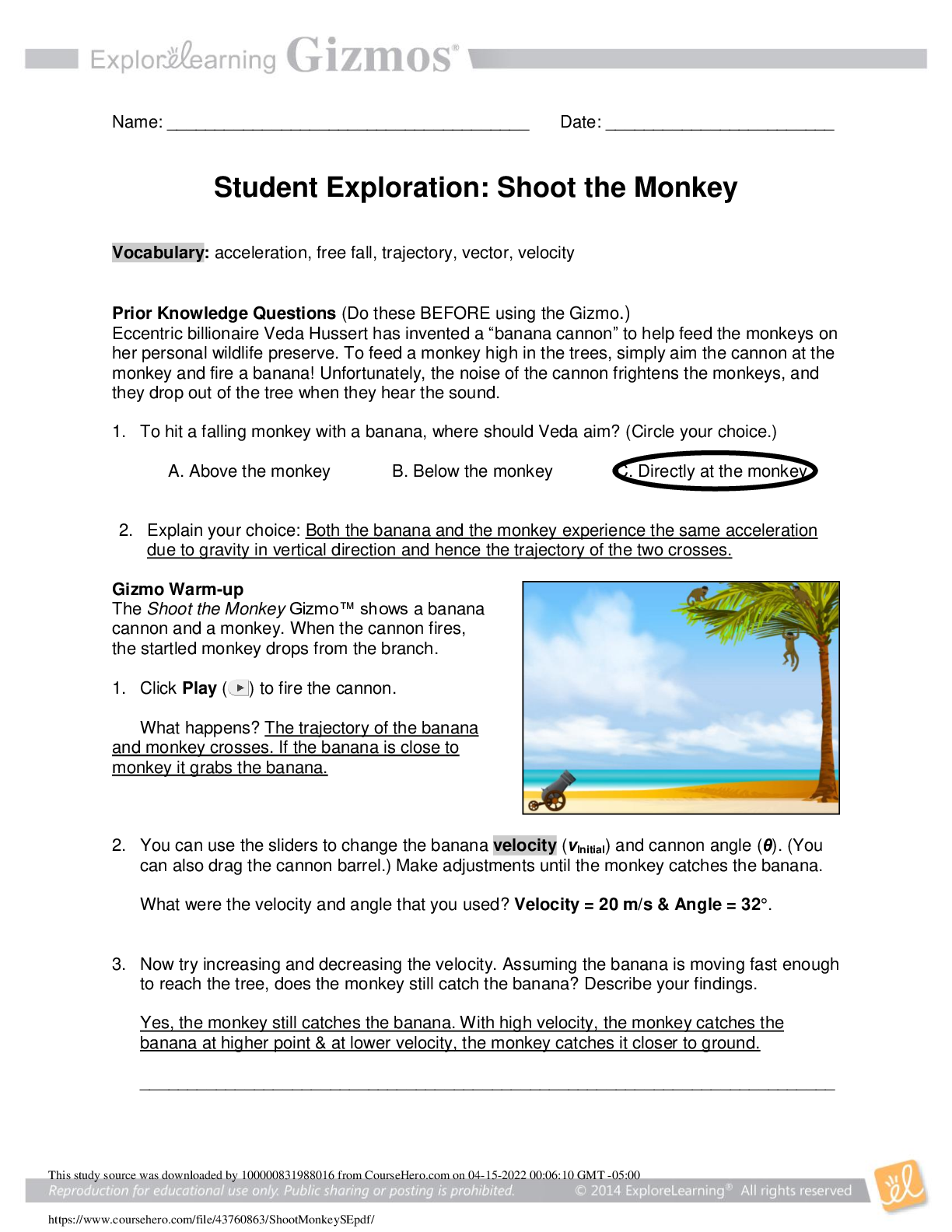
Buy this document to get the full access instantly
Instant Download Access after purchase
Buy NowInstant download
We Accept:

Reviews( 0 )
$7.00
Can't find what you want? Try our AI powered Search
Document information
Connected school, study & course
About the document
Uploaded On
Apr 15, 2022
Number of pages
4
Written in
All
Additional information
This document has been written for:
Uploaded
Apr 15, 2022
Downloads
0
Views
220


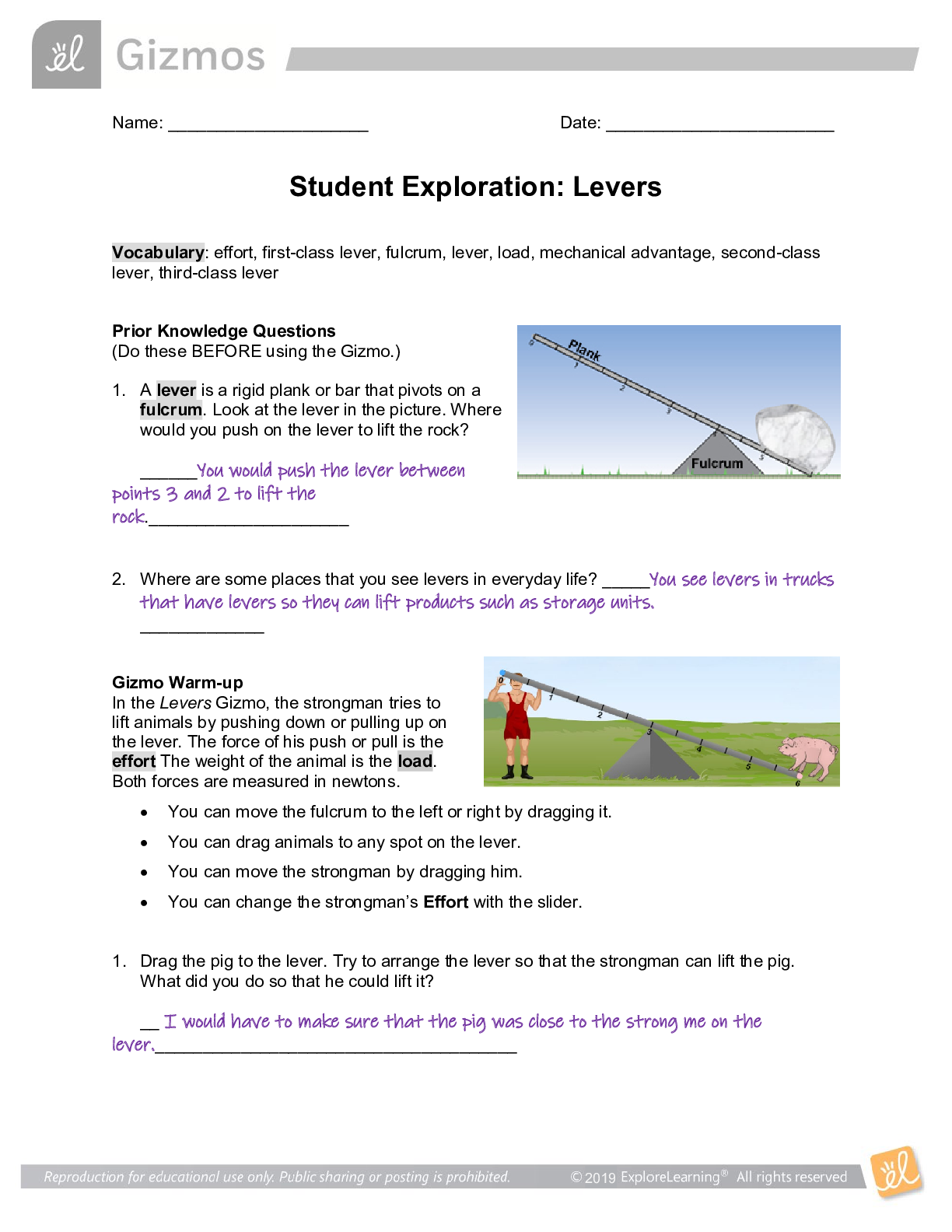

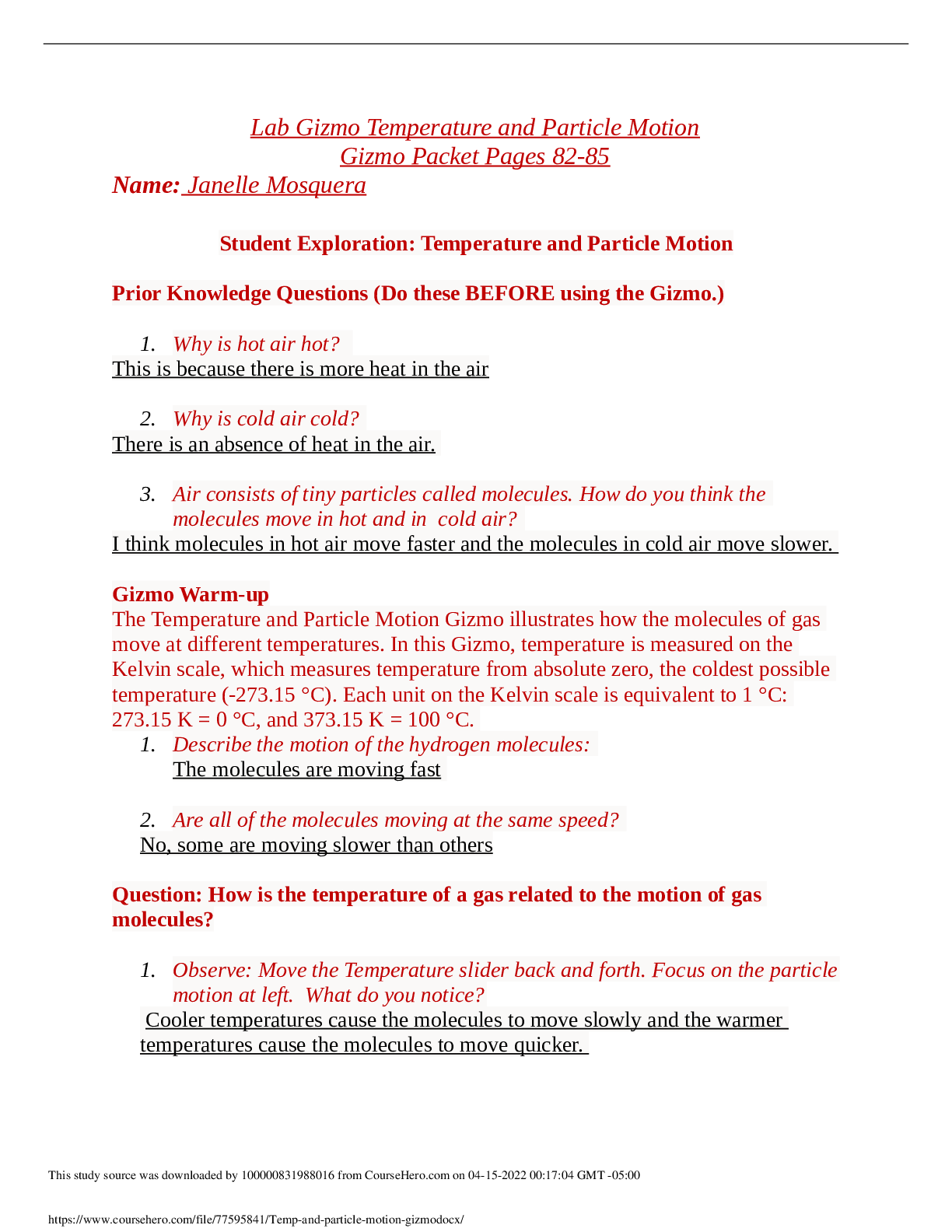


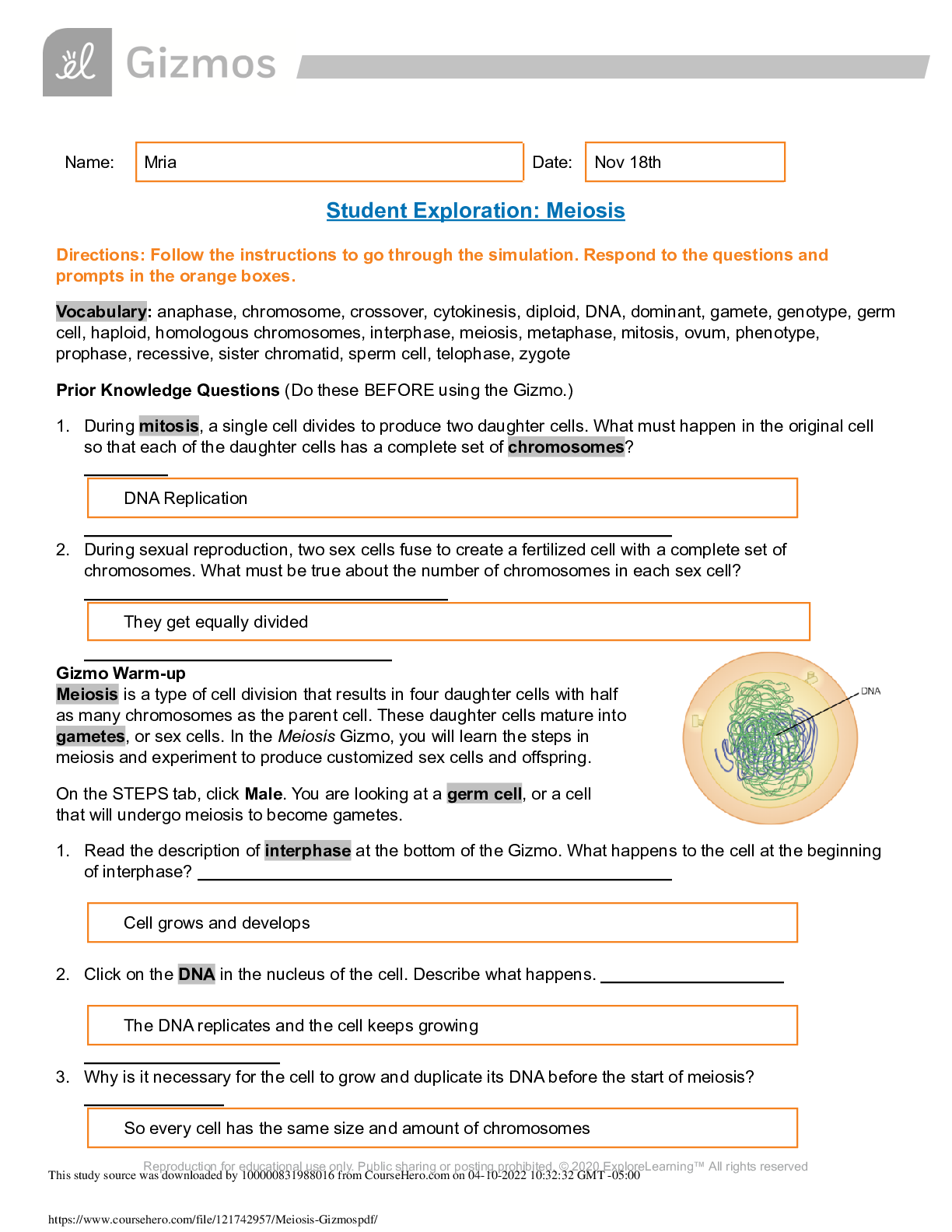
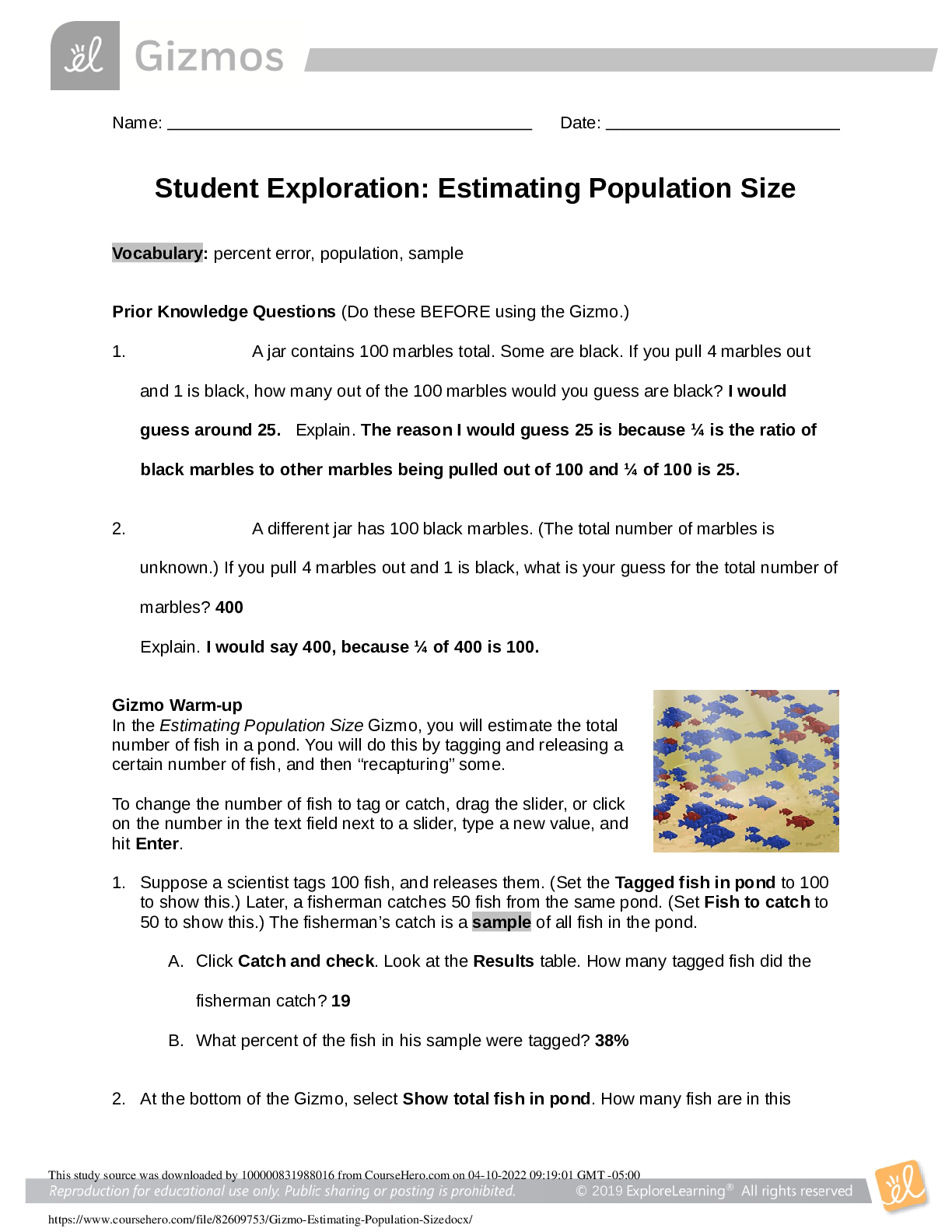

.png)
